Why do the edges of the leaves dry in spathiphyllum and what to do about it?
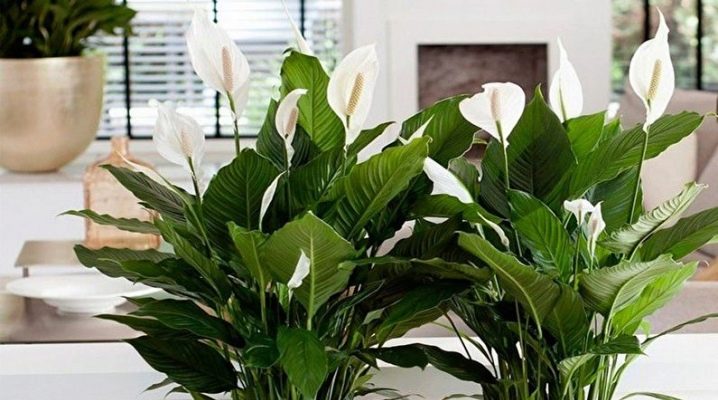
Spathiphyllum, or "female happiness" flower, is an elegant indoor plant, which is loved by flower growers for its unusual exotic look. Despite its tropical origin, spathiphyllum is relatively undemanding to conditions of detention and rarely causes trouble for a caring owner.
The fact that the plant needs help is indicated by various signs that cannot be ignored. One of the most disturbing symptoms is the drying out of the edges and tips of the leaves.
Description of the problem and symptoms
Usually, the problem does not develop at lightning speed, but gradually, becoming more noticeable from day to day. At first, the plant begins to lose its decorative effect, acquiring a painful appearance. In these cases, the leaves of the spathiphyllum droop, losing their original turgor, juiciness and glossy shine. Against the background of changes occurring in the tissues of the leaf plate, the natural process of photosynthesis is disrupted. As a result, the foliage of the plant begins to fade, turn yellow and wrinkle. Due to disturbed biological processes, the leaf plate loses its elasticity, becomes brittle, begins to crumble and eventually simply disappears.
Leaves may dry out unevenly. Most often, the problem begins with the fact that the edges of the leaves dry out in spathiphyllum, the ends darken and dry out. If the cause is not established in a timely manner and the necessary measures are not taken, the foliage of the plant will dry out rather quickly and fly around.
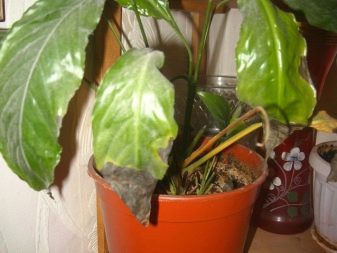
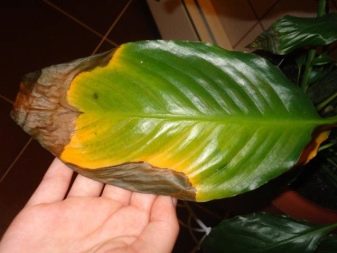
It is important to take into account that if 1-2 leaves dry up on a plant from time to time, this may be due to the natural completion of their life cycle.
Over time, the old and exhausted leaves are replaced by new ones. This is an integral process that accompanies the development of any plant. In addition, drying and yellowing of foliage in spathiphyllum may be due to the previous long flowering, which depleted the strength of the plant.
There are frequent cases when spathiphyllum temporarily lose their decorative effect, begin to turn yellow and dry out shortly before the flowering period. Plant breeders explain this phenomenon by the fact that in this way the representatives of the tropical flora accumulate the strength they need to form buds. In this case, slight yellowing and drying of the leaves is not a critical deviation from the norm.
Concern should be caused by massive wilting and drying of leaves, both old and young. In some cases, this pathological process may be accompanied by the formation of strange spots of yellowish, gray-white, brown-brown or black color on the leaves. This directly indicates serious disturbances and changes in the general condition of the plant.
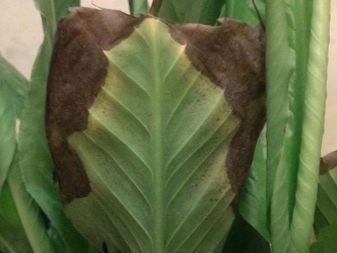
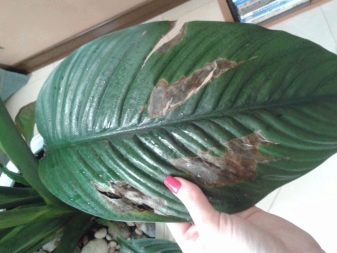
Causes
The exotic origin of spathiphyllum causes its increased sensitivity to changes in the usual environment and to violations of the rules of care. Among the main reasons that can cause drying of the edges and ends of leaves, growers note:
- inappropriate lighting;
- unsuitable humidity;
- temperature violations;
- violations of the irrigation regime;
- violation of the feeding regime;
- unsuitable pot;
- unsuitable substrate;
- diseases and activities of pests.
Lighting
In their natural habitat, spathiphyllums grow in humid forests, where soft, diffused light reigns in abundance.At home, you can fill the flower's need for lighting by placing the pot on the windowsill in the southern, eastern or western part of the house... It is very important that the plant receives a sufficient amount of light, but it must be protected from direct sunlight. Direct sunlight is harmful to the delicate leaves of spathiphyllum, therefore, the plant should be shaded from the bright sun.
Otherwise, burns are formed on the surface of the leaves, provoking further drying and wilting of the leaf plates.
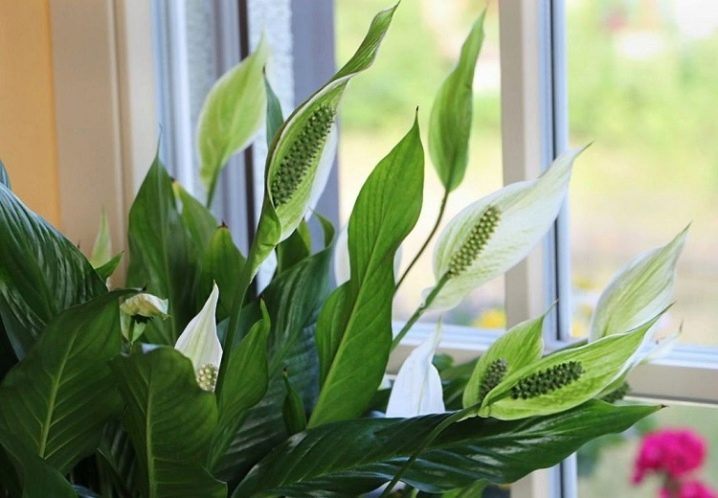
Humidity
As a representative of the tropical flora, spathiphyllum is very painful to tolerate a lack of moisture in the air. Its natural habitat is forest thickets along the banks of rivers and streams, where high humidity is constantly noted.
Dry air dehydrates and depletes the succulent foliage of this exotic, causing the plant to turn yellow and dry. It is for this reason that spathiphyllums become very vulnerable during the heating season. In order to prevent the leaves from drying out due to dried air, flower growers recommend do not neglect regular spraying of exotic plants in hot weather, as well as during the heating season.
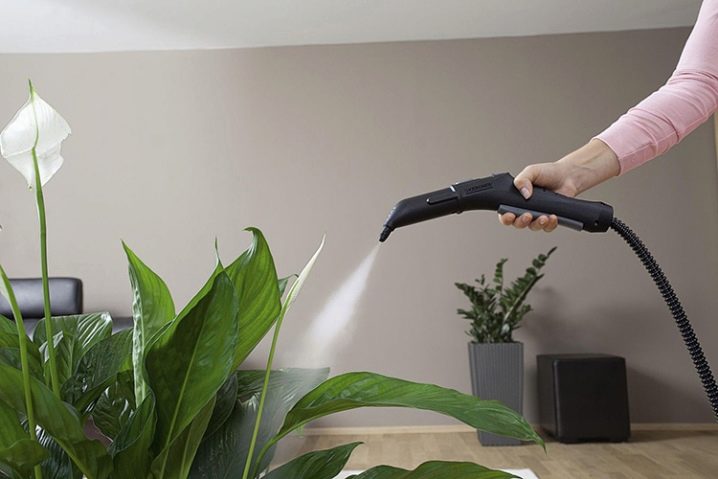
Temperature regime
Spathiphyllums are thermophilic representatives of the tropical flora, painfully reacting to temperature drops and drops. Plants can develop fully at a constant temperature of about 23 °. Some novice florists often make a gross mistake by placing these exotic plants near heating appliances. In very hot conditions, often accompanied by dry air, plants begin to ache, and their foliage will turn yellow and dry.
To prevent this from happening, it is necessary to maintain a stable temperature in the room where spathiphyllums grow, avoiding placing them next to radiators. A very important condition is the protection of plants from drafts. Cold air causes severe stress in gentle exotics, which, in turn, leads to a decrease in immunity.
As a result, the plant can not only begin to dry out and hurt, but even die.
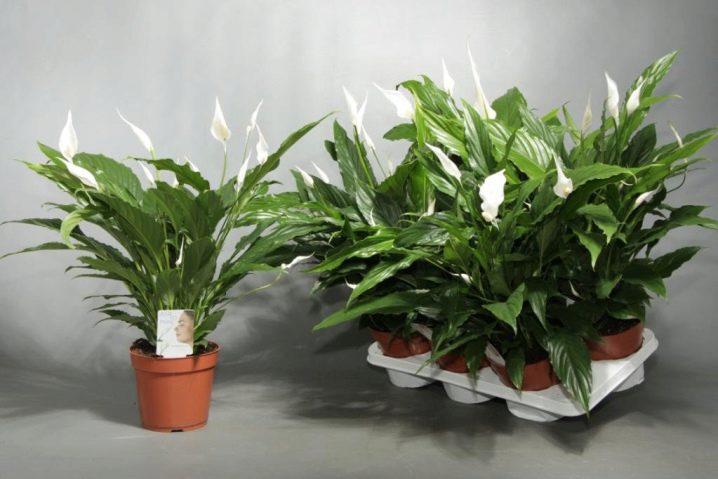
Watering
Exotic spathiphyllums are very demanding on moisture, without which they quickly dry and turn yellow. In summer, plants should be watered often and abundantly, while avoiding stagnation of water in the pot. In winter, it is advisable to limit watering, making sure that the substrate is always in a moderately moist state. Drying out of an earthen coma in a pot is no less detrimental to plants than waterlogging of the soil.
Spathiphyllum should be watered with soft, settled warm water. Irrigation with cold water is a strong stress factor for plants and their root system. As a result of hypothermia, exotics can get sick, dry out and even shed their leaves.

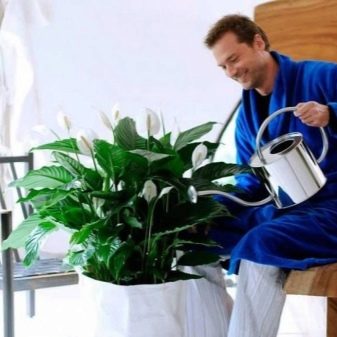
Top dressing
When growing spathiphyllums, it is very important to observe the correct feeding regime. The deficiency of nutrients in the substrate, as well as their excess, are perceived by plants negatively. In either case, in delicate exotic plants, the leaves may begin to dry, the ends may turn black or yellow.
To avoid problems associated with improper feeding, it is advisable to use complex fertilizers for decorative flowering plants or fertilizers designed specifically for spathiphyllums. It is necessary to apply top dressing strictly in accordance with the recommended schedule.
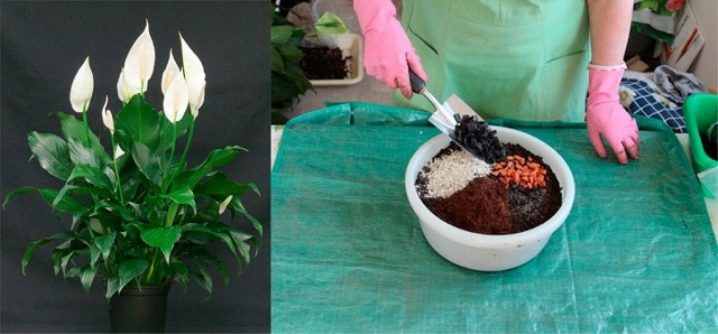
Pot
Very often, the cause of problems in spathiphyllum is the inappropriate size of the pot. In a very tight container, the roots intertwine, squeezing each other strongly. As a result of dysfunction of the root system, the aerial part of the plant does not receive the normal amount of moisture and nutrients, which leads to wilting and drying of the leaves.
However, a very spacious pot can cause problems. In this case, the roots of the plant cannot fully master the entire space of the container, as a result of which the soil begins to swamp.This leads to the development of diseases of the root system and, as a consequence, the withering of the tender exotic.

Substrate
For spathiphyllum, the composition and quality of the substrate is very important. These sensitive plants prefer loose, slightly acidic soils, rich in micro- and macroelements. In addition, the substrate must be moisture and air permeable, providing access to water and oxygen to the roots. For growing spathiphyllums, it is recommended to use a mixture:
- 2 pieces of turf;
- 1 part deciduous humus;
- 1 part peat;
- 1 part sand.
It is desirable to add charcoal to the soil mixture, which will enhance the antibacterial properties of the substrate. Before laying the substrate on the bottom of the pot, be sure to fill in a layer of drainage.
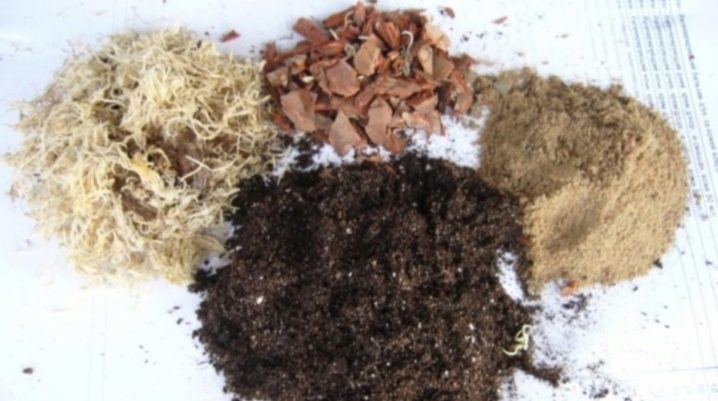
Diseases and activities of pests
If the leaves of the spathiphyllum began to wither and dry, but no changes were made in the care and conditions of detention, this may indicate a damage to the root system.
In the case when the roots are attacked by pathogens (fungi, bacteria) or insect pests, all biological processes in plant tissues are disrupted. As a result, damaged roots are unable to fully provide the aboveground part with moisture and nutrients. This, in turn, causes the foliage to dry out and fall off.
How to save a flower?
Remedial action should be carried out based on the cause of the problem.
- If the flower begins to turn yellow, wither or dry, it is necessary to create the most gentle conditions for it. For this, the plant is placed in a place with soft diffused light, a constant temperature of 22-23 °, a stable air humidity within 65%. To maintain a stable indoor humidity, plants should be sprayed with a spray bottle. This must be done daily.
- There should be no drafts in the room where the injured spathiphyllum is located. For the duration of the airing of the room, the plants should be moved to another place.
- Completely dried leaves must be removed with sharp scissors. This will stimulate the growth of new young foliage.
- If the reason for the drying of the plant is inappropriate humidity or irregularities in the irrigation regime, it is advisable to install a wide pan with water next to the pot. And also a household humidifier can provide significant assistance in restoring exotic plants at home.
- Experienced growers recommend washing the intact leaves with soap and water during the recovery period. This procedure is carried out once a week.
- If the affected plant is provided with all the necessary conditions, but it is still in no hurry to recover, it is allowed to carefully remove it from the pot to inspect the roots and substrate. This measure will confirm or exclude the presence of diseases of the root system or its damage by pests. If the plant has suffered from root rot, complex treatment with the use of fungicidal preparations is required. If pests are found on the roots or in the substrate, it is necessary to carry out a thorough treatment with insecticides. In both cases, it is required to completely replace the infected substrate, disinfect the pot and plant roots.
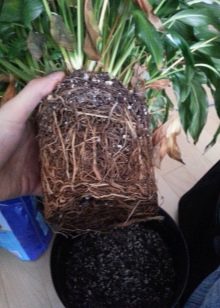
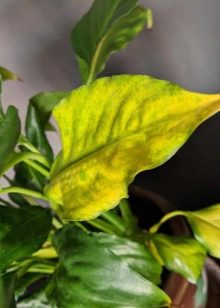

Prophylaxis
In order to continue to prevent drying and falling of foliage in spathiphyllum, the plant should be carefully and competently looked after. It is necessary to create all the conditions for exotic growth and development, to closely monitor its condition. Constant monitoring will allow timely diagnosis of impending plant health problems.
The reason for the drying of the leaves can be not only violations of the rules of care, but also stress. Drafts, sudden changes in temperature, watering with cold water and even a change in the usual location - all this can negatively affect the plant.
It should be remembered that the exotic origin of spathiphyllum causes its increased susceptibility and susceptibility to stress factors.
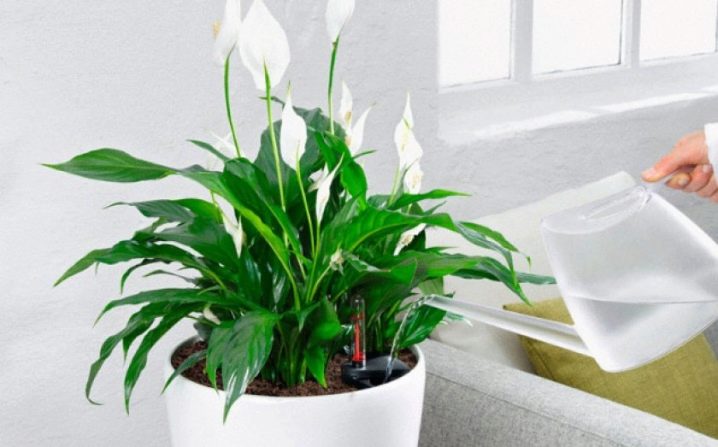
To prevent the development of diseases and reduce the risk of pest infestation, it is necessary to regularly inspect the exotic, check the condition of the soil mixture in the pot. If a white-yellow bloom has formed on the surface of the soil, which is often noted when irrigating with hard water, the top layer should be removed and fresh earth should be poured in its place. New substrate and transplant containers should be carefully handled before use.
Diseased plants required urgently isolate from healthy indoor flowers and take all the necessary medical and preventive measures.
For information on why the edges of the leaves dry in spathiphyllum and what to do about it, see the next video.































The comment was sent successfully.